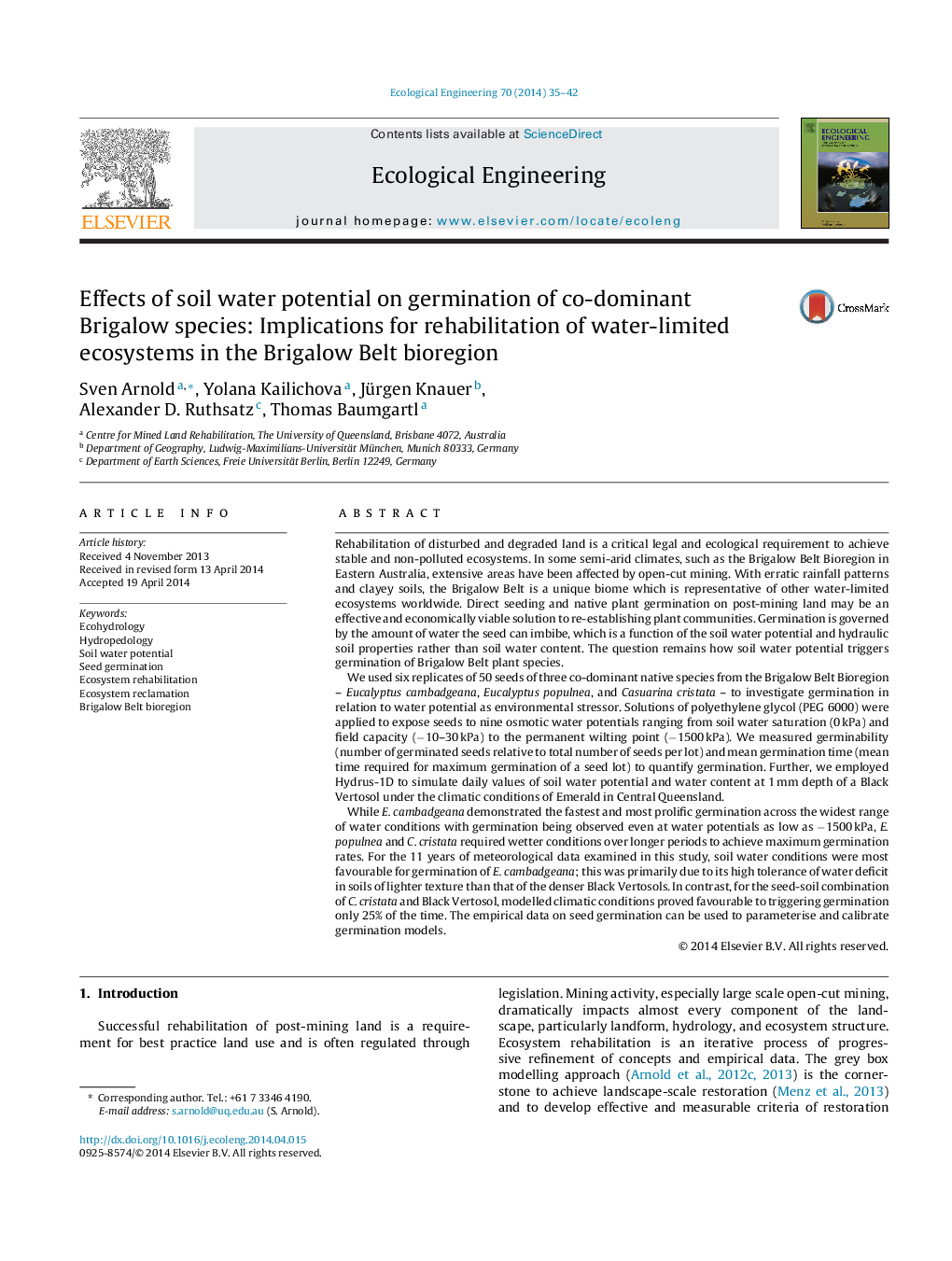| Article ID | Journal | Published Year | Pages | File Type |
|---|---|---|---|---|
| 6302099 | Ecological Engineering | 2014 | 8 Pages |
Abstract
While E. cambadgeana demonstrated the fastest and most prolific germination across the widest range of water conditions with germination being observed even at water potentials as low as â1500Â kPa, E. populnea and C. cristata required wetter conditions over longer periods to achieve maximum germination rates. For the 11 years of meteorological data examined in this study, soil water conditions were most favourable for germination of E. cambadgeana; this was primarily due to its high tolerance of water deficit in soils of lighter texture than that of the denser Black Vertosols. In contrast, for the seed-soil combination of C. cristata and Black Vertosol, modelled climatic conditions proved favourable to triggering germination only 25% of the time. The empirical data on seed germination can be used to parameterise and calibrate germination models.
Related Topics
Life Sciences
Agricultural and Biological Sciences
Ecology, Evolution, Behavior and Systematics
Authors
Sven Arnold, Yolana Kailichova, Jürgen Knauer, Alexander D. Ruthsatz, Thomas Baumgartl,
